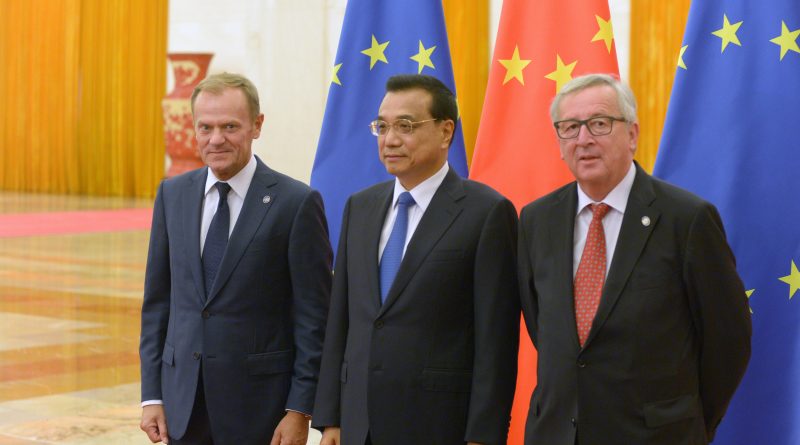EU-China Summit Generates Mixed Success
Luisa Chainferber
Staff Writer
The European Union (EU) and China convened at the EU-China Summit on April 9 to discuss their relationship and economic agenda, reports the EU Commission. According to the Commission, the EU aims to build a more balanced economic relationship with China and increase the countries’ engagement on global issues such as World Trade Organization (WTO) reform.
Representatives from both countries described the summit as a win-win. It demonstrated that the European Union has more than soft power and that China is open to deal with the EU as a collective. For China, the summit demonstrated that the country can compromise and act reasonably, despite United States President Trump’s attempts to portray the halts on US-China trade talks due to Chinese stubbornness, says Politico.
China guaranteed that it will abide by EU rules and standards, reports South China Morning Post. Chinese Premier Li Keqiang also emphasized the need to increase trade and further integrate their economies. Currently the EU represents China’s biggest trading partner, with their transactions including more than $1.9 million daily.
According to the Wall Street Journal, the summit was a significant shift from the one that took place two years ago. During the 2019 Summit, the EU was more assertive and pressured China on topics such as technology transfer and subsidies.
OIn an earlier report from the South China Morning Post, the Chinese Premier Li Keqiang defended the subsidies and claimed that these allowances aim to protect workers rather than support industries. Due to these subsidies, the officials almost did not sign a joint statement at the end of the summit. The Chinese Premier also noted that China follows WTO rules and promised to address the subsidies question.
The Wall Street Journal addressed in a later report why the EU is unwilling to tolerate China’s subsidies and investment restrictions. They explained that these subsidies threaten the WTO system. As it is hard to estimate their extent, in order to have a well-functioning WTO, it is necessary to push China to abide by WTO’s regulations.
Some believe that the Summit held only good intentions that will lack proper implementation, says Deutsche Welles. China’s concessions on technology may not happen given that Beijing considers that foreign investors in China must obey Chinese laws, so the EU will still have to transfer its technology. Moreover, there was little progress in China’s One Belt One Road initiative. The EU and Beijing still have different understandings of what are the international norms and standards that China’s initiative must follow, a problem that is not easily remedied over a single conference.
CGTN News, a Chinese state-owned news channel, highlighted how continuous communication between the EU and China is critical to foster their relationship and deal with common challenges such as protectionism, WTO reform, and climate change.
Overall, the agreement reached represents an attempt at unification in order to counter the challenge imposed by Mr. Trump’s “America First” policies, says Bloomberg. The EU seeks to reject U.S. protectionism and trade wars with China. The bloc would also like Chinese assistance in fight against climate change due to U.S. withdrawal of climate agreements. However, the EU still established the completion of an investor agreement by 2020 as a pre-condition for possible free-trade negotiations.

